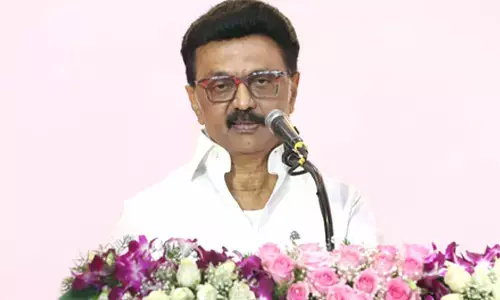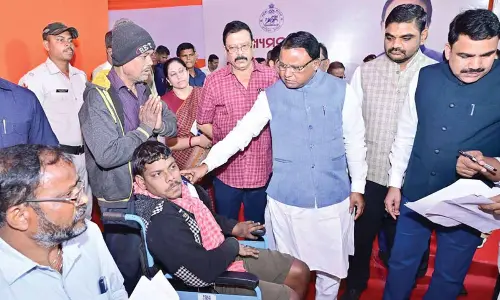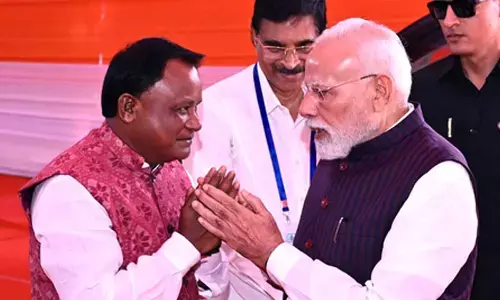Providing more stimuli to raise rural demand key to bridge economic disparity

Providing more stimuli to raise rural demand key to bridge economic disparity
The economic design we follow is so built that it actually widens inequality. The official statistics belies the flawed argument that providing more tax concession to industry will lead to more job creation, with almost six million salaried jobs lost in November alone
When I would say perhaps you would not believe it. "The share of wealth held by public actors is close to zero or negative in rich countries, meaning that the totality of wealth is in private hands. This trend has been magnified by the Covid crisis, during which governments borrowed the equivalent of 10-20 per cent of GDP, essentially from the private sector."
Simply put, this observation from the World Inequality Report 2022 means that over the years the governments across the globe are witnessing a unique trend – increasingly they find their treasuries are getting empty. So much so that even the interest rate on small savings are being reduced to help bridge the deficit in revenue collections arising essentially from huge stimulus packages being periodically doled out to big business. It is therefore quite obvious that while the government coffers are getting depleted, the rich are amassing wealth in an unequal proportion. This does mean that the resources are in a way being transferred from the government treasury to the private lockers.
That's perhaps what must have prompted the British MP Zarah Sultana to say that the super rich don't create wealth but they are given wealth. "The wealth of billionaires in UK rocketed £106,500,000,000 during the pandemic. The super rich – and not the working class – should pay more tax." Another study by the New Economic Foundation shows the rich have a runaway success while the poor have been squeezed in the past two years. The widening inequality is not only restricted to UK, but has emerged as a global phenomenon, a disquiet outcome of the neoliberal economic design that was thrust upon every nation.
While more than 800 million people in India live on less than $2 a day, the combined wealth of the top one per cent rose by 35 per cent during the pandemic. While India added another 40 billionaires during the pandemic, nearly 50 per cent of its population is barely surviving on Rs4,500 per month. This is the average, but don't forget the shocker that the Economic Survey 2016 had brought out. The average income of farmers in 17 States of India, which means roughly half the country, stood at a paltry Rs 20,000 ($267) a year. Imagine how the farming families must be surviving with an average income of less than Rs 1,700 a month.
"India stands out as a poor and very unequal county, with an affluent elite," the report rightly observed. With the top 10 per cent having 20 times more wealth than the bottom half, the inequalities obviously galore. Similarly, at the international level, the richest 10 per cent hold 52 per cent of global income. The poor are left with only 8 per cent. As if this is not enough, the gulf between the rich and the poor has further widened during the pandemic. In America alone, the combined wealth of its billionaires has increased by a whopping 44.6 per cent during the pandemic, a study by the Institute of Policy Study had brought out.
Interestingly, the World Inequality Report draws attention to a faulty perception that has been created in public thinking about the failure of socialism in restricting the economic divide. Between 1951 and 1981, the report shows that inequality was far less than what has been witnessed in the reforms era beginning early 1980s. And as Don Price, a Seattle-based CEO tweeted the other day: "One of the biggest myths of capitalism is that the rich are job creators. In the pandemic, billionaires' wealth is up $2.1 trillion and the number of jobs is down 4.2 million. The myth is so dangerous because it leads people to idolise the rich and give them whatever they want."
True. In India, whenever a question is raised on the need to provide more stimuli to raise rural demand, a chorus immediately emerges on giving more tax concession and economic stimulus packages to the supply side, meaning the industry, saying it will lead to more job creation. The official statistics have however belies this flawed argument, with almost six million salaried jobs lost in November alone.
The economic design we follow is so built that it actually widens inequality. To illustrate: if only the annual Rs1.45-lakh crore tax bonanza that was given to the Indian industry in Sept 2019 was instead provided to farmers , an additional Rs 12,000 per year could go to each land owing farmer, increasing the entitlement under PM Kisan Samman Nidhi programme to Rs 18,000. Such a decent direct income support would have not only helped bridge the existing economic disparity but would have helped create an increased rural demand thereby adding on to country's economy. Providing more money in the hands of farmers would be the right step ahead in making agriculture economically viable thereby reducing the pressure on the cities for creating jobs. This makes strong economic sense given the speed with which automation is happening in the industry.
Take another example. In the US, General Mills has already announced that given the high rate of inflation, it will be forced to raise the prices of its grocery products from the beginning of the New Year. What it did not say, and as Don Price pointed out: "GM Mills paid a $300 million dividend to investors, brought back $150 million in stock to enrich execs and investors, and pays its CEO $16 million. It makes $2.1 billion a year in profit. It is raising prices by 20 per cent and blaming 'inflation'." Globally it has been seen that co's flush with cash (thanks to tax cuts, bailouts and stimulus) do not invest in creating jobs but use it for buying back shares. India is no exception. Media reports show that Indian companies had bought back shares worth Rs 2-lakh crore in the past five years.
Inequalities also exist within the corporate houses. As Robert Reich, former US Labour Secretary explains one way is to look at the CEO-to-worker pay ratio. Coca-Cola CEO has an income package that is 1,621 times higher than a median worker's salary. Similarly, Levi Strauss: 661-to-1; McCormick & Co: 585-to-1; Carnival: 490-to-1; Unisys: 313-to-1; and Tyson Foods: 294-to-1. As per a media report, the basic salary of Star Bucks CEO was 12,617 per cent higher in 2020 than the media employees salary. This mind-boggling pay structure provides a basic salary of $1.54 million to the CEO while the average income of a farmer growing coffee beans is less than the international acute poverty line of $1.9 per day. The inequalities that makes the top executives walk away slush with money therefore is woven in the company's balance sheets, and similarly I find the distressing level of inequalities we see globally are also entwined in the way reforms are designed.
(The author is a noted food policy analyst and an expert on issues related to the agriculture sector. He writes on food, agriculture and hunger)














